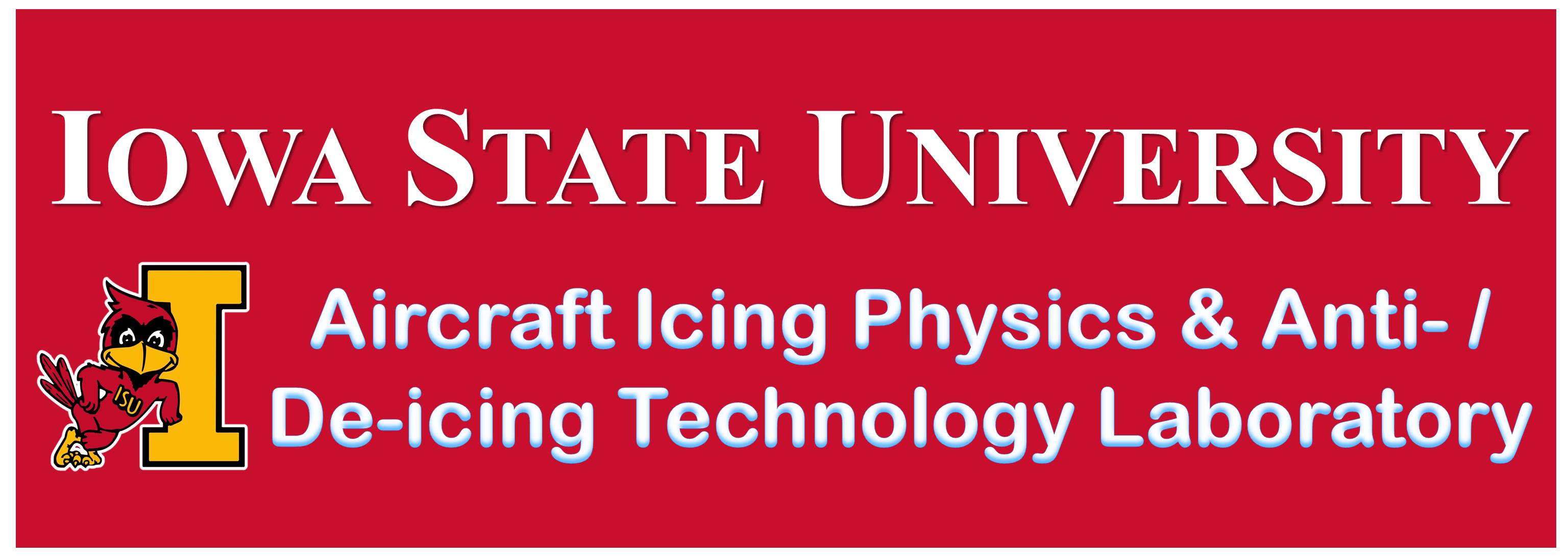|
|
Aircraft Icing Physics & Anti-/De-icing Technology Laboratory
Research Topics:
Ice accretion on cold surfaces is a topic of great concern for a number of engineering applications. Ice formation and accretion on power cable and radio masts have been found to cause significant damage or completely destroyed the electric equipment on numerous occasions. Aircraft icing is widely recognized as one of the most serious weather hazards to aircraft operations. The importance of proper ice control for aircraft operation in cold climates was highlighted by many aircraft crashes in recent years, like the Continental Connection Flight 3407, which crashed in Buffalo, New York due to ice buildup on its wing, killing all 49 people aboard and one person on the ground, as the plane hit a residential home on 14 February 2009. Wind-turbine icing represents the most significant threat to the integrity of wind turbines in cold weather. It has been found that ice accretion on turbine blades would decrease power production of the wind turbines significantly. Ice accretion and irregular shedding during wind-turbine operation would lead to load imbalances, as well as excessive turbine vibration, often causing the wind turbine to shut off. Icing was also found to affect the reliability of anemometers, thereby leading to inaccurate wind-speed measurements and resulting in resource estimation errors.
Advancing the technology for safe and efficient operation of numerous functional devices in atmospheric icing conditions requires a better understanding of the underlying icing physics. While a number of theoretic and numerical studies have been conducted in recent years to develop ice prediction tools for improved ice protection system designs, many details of important microphysical processes that are responsible for the ice formation and accretion over frozen cold surfaces are still unclear. Fundamental icing physics studies capable of providing accurate measurements to quantify important microphysical processes associated with icing phenomena are highly desirable in order to elucidate the underlying physics.
By leveraging the unique Icing Research Tunnel (ISU-IRT) available at Iowa State University (ISU) and our technical expertise on icing physics and modeling; experimental aerodynamics and heat transfer; computational fluid mechanics (CFD); multiphase physics modeling and simulation; high-performance computing and data mining; high-speed imaging and non-destructive evaluation (NDE); surface chemistry; hydrophobic coatings and surface engineering; smart materials and nanotechnology, researchers of ISU Initiative for Icing Physics & Anti-/De-icing (I3-PAD) are conducting comprehensive theoretical, computational, and experimental studies to quantify important micro-physical processes pertinent to various icing phenomena. A better understanding of the important micro-physical processes will enable us to improve current icing accretion models for more accurate prediction of ice formation and accretion processes as well as to develop more effective and robust anti-/de-icing strategies to ensure safer and more efficient operations of various functional devices in cold weather.
The research focus of ISU Initiative for Icing Physic & Anti-/De-icing (I3-PAD) can be summarized as:
-
Aircraft icing physics and anti-/de-icing technology
-
Aero-engine icing physics and anti-/de-icing technology
-
Power cable icing physics and anti-/de-icing technology
-
Solar Panel icing physics and anti-/de-icing technology

(a). Over the upper surface of the airfoil

(b). Over the lower surface of the airfoil
Glaze ice accretion process over a NACA0012 airfoil with airflow speed V=35m/s, T=-8°C, α = 5.0 deg. (Waldman & Hu, 2014)
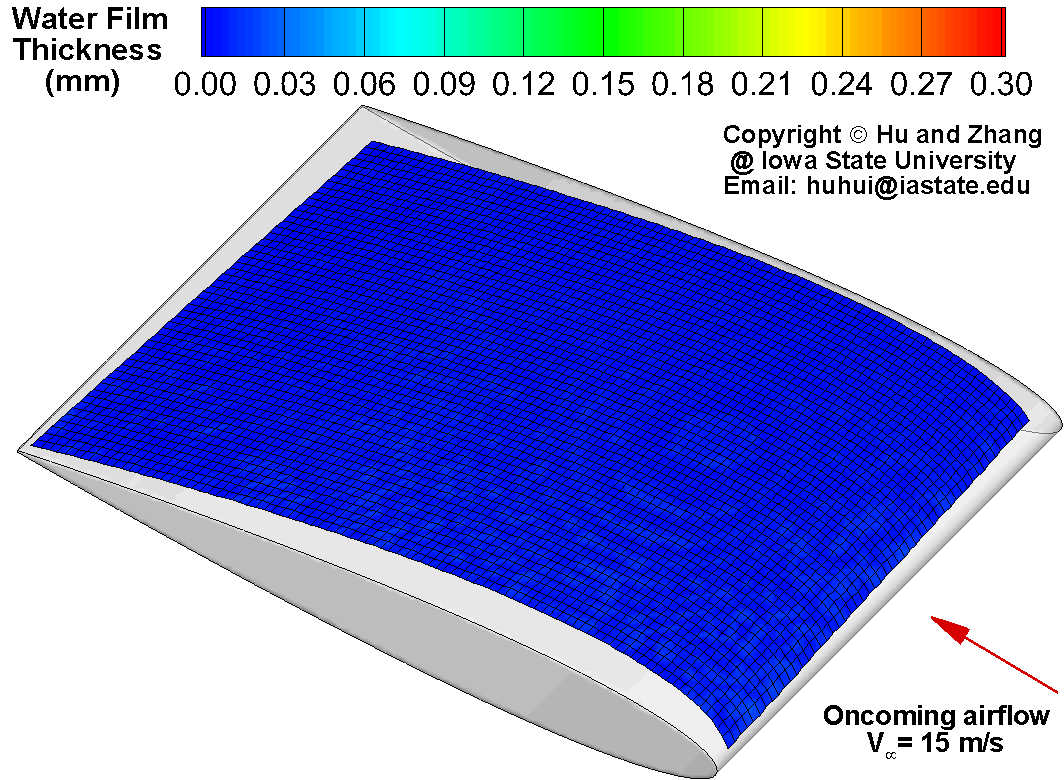
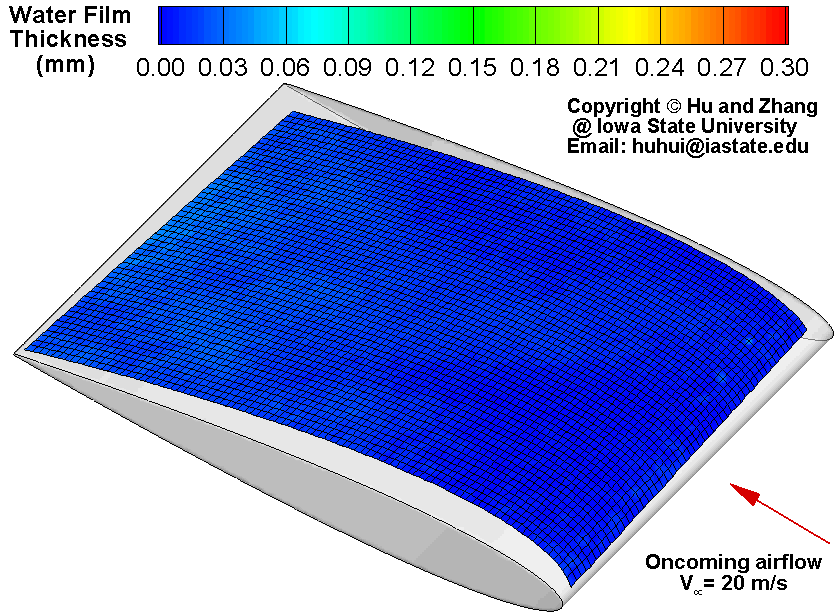
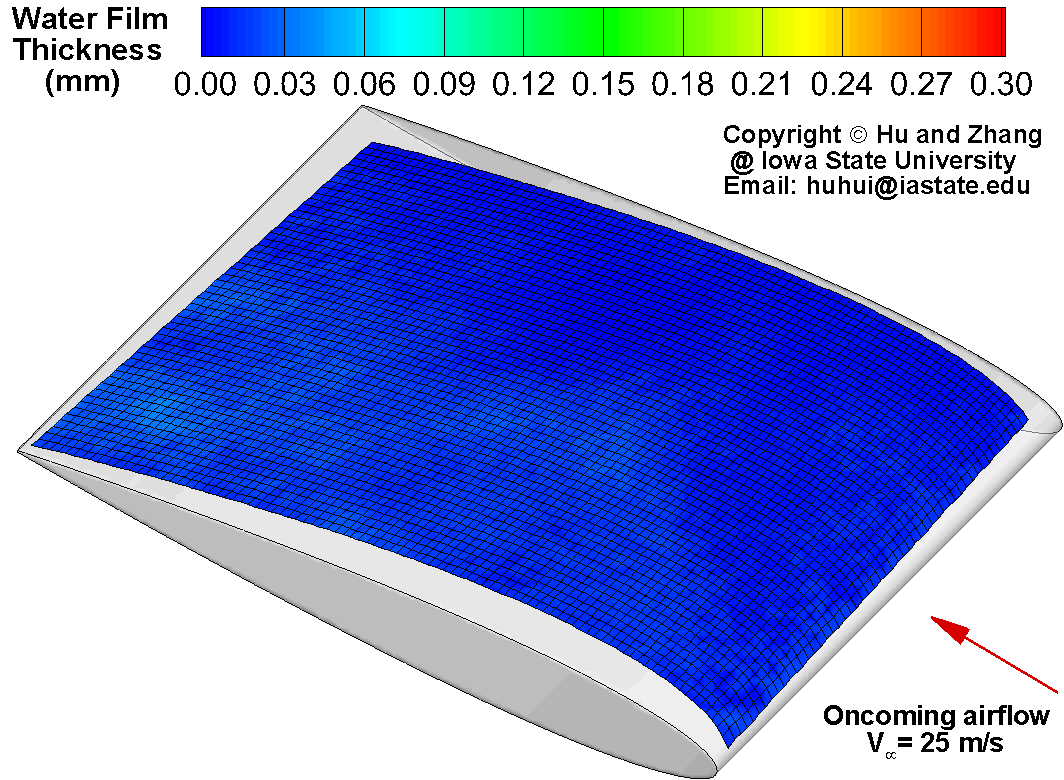
(a). airflow velocity V=15m/s (b). airflow velocity V=20m/s (c). airflow velocity V=25m/s
Surface water rivulet/film flow over a NACA0012 airfoil pertinent to aircraft icing phenomena (Zhang & Hu et al. 2013)
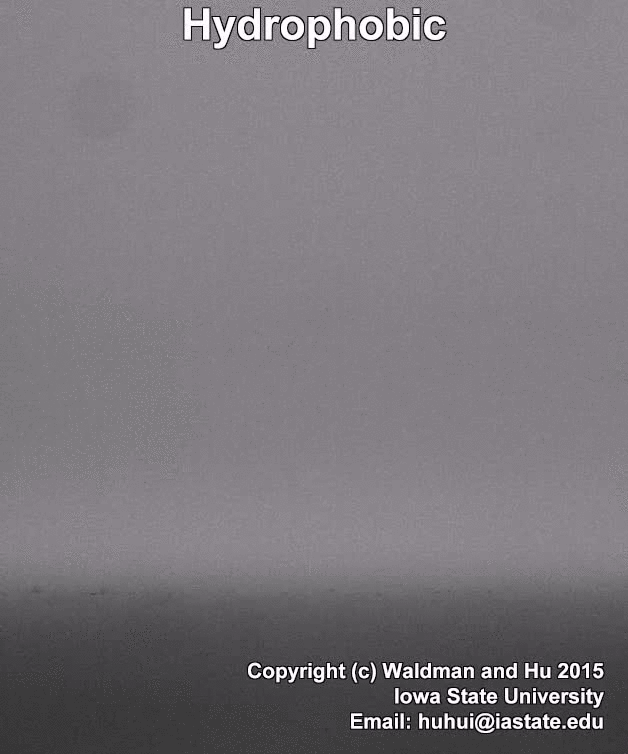
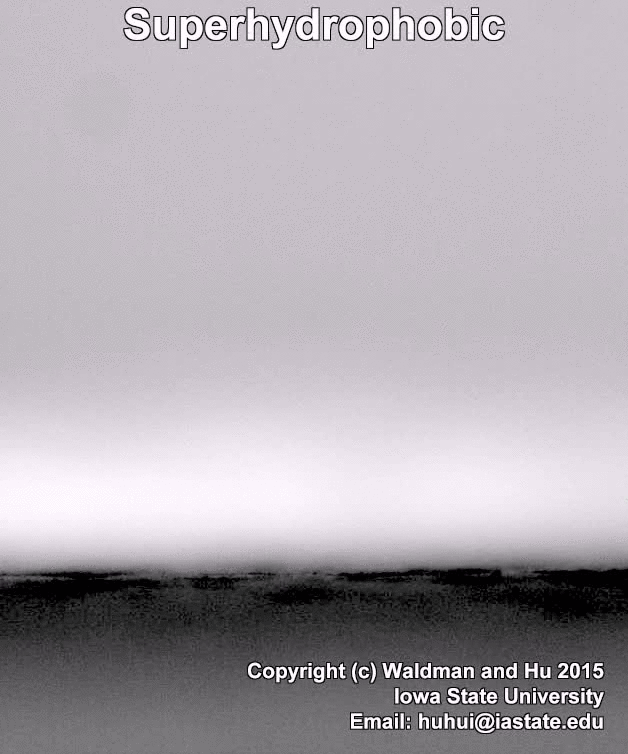
Comparison of water droplet impinging onto a surface with and without superhydrophobic coating (Waldman & Hu, 2014)
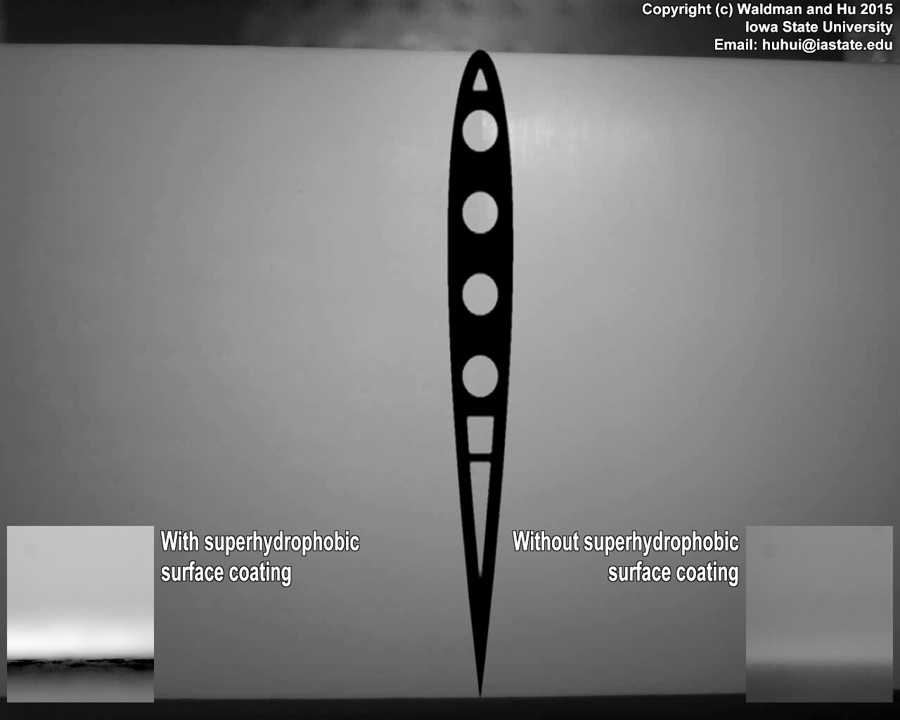
Effects of superhydrophobic surface (SHS) coating on the ice accreting process over an airfoil surface (Waldman & Hu, 2015)
![]()
![]()
Department of Aerospace Engineering, Iowa State
University, 2271 Howe Hall, Room 1200, Ames, Iowa 50011
Copyright © Iowa State University. All rights reserved.
